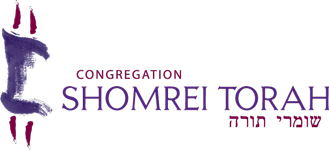By Rabbi George Gittleman | Santa Rosa Press Democrat
When my family lights the menorah tonight in celebration of Hanukkah, we will be remembering an ancient leap of faith that resulted in a miracle — and that brought to the world a message of hope and redemption.
Many Americans are familiar with the Jewish ritual of lighting the menorah, the nine-branched candelabra which is the focal point of Hanukkah. Few, however, know what it symbolizes. The meaning of Hanukkah is embedded in two stories: one of the triumph of right over might and the other, a miracle of light in a dark world. Both these stories are important, carrying with them ancient yet timeless messages for all peoples everywhere.
Even 2,200 years ago there was conflict in the Middle East. At that time, the Seleucid Empire was the superpower of the region. Antiochus Epiphanes ascended the Seleucid throne in 167 B.C. Unlike many of Antiochus’ subjects, the Jews refused to assimilate to Hellenistic ways. Antiochus responded by persecuting the Jews, profaning their great temple in Jerusalem and outlawing all Jewish religious practices, using his many garrisons to enforce his evil decrees.
The Jews, led by the Maccabees, revolted and in spite of their small numbers, managed to defeat the vast Seleucid armies, recapturing Jerusalem and reclaiming the great temple. The foundations of that same temple can still be found on Mount Zion in Jerusalem today. The successful revolt of the Maccabees is a timeless testimony to the limits of power, especially when it is wrongly used to subjugate and persecute another people.
Even though the Maccabees’ triumph is central to the Hanukkah story, Judaism downplays the military victory, focusing instead on the miracle that followed.
According to Jewish legend, at the end of the fighting, Jews returning to the great temple in Jerusalem found it in disarray. They worked tirelessly to rededicate it (Hanukkah means “rededication”). There was only one problem; to rededicate the temple they must re-light the eternal light that stayed continually lit in its inner sanctum. There was only enough oil for one day, yet it would take eight days to produce more oil. What should they do? Their victory was incomplete without the symbol of God’s eternal presence — a flame in their holy of holy sites.
They chose to take a leap of faith, to send some light into a dark world, even if the light would eventually go out. But, so the story goes, it did not go out. Instead, it burned continuously for eight days, long enough for more oil to be pressed. A miracle of light, and a message of hope and redemption; not by might or by power, but by spirit — faith, commitment, courage and determination — do we triumph over evil.
It must have been tempting for those ancient Jews to glorify their military victory. Perhaps they did at first. But like their oppressors, they too fell prey to the corrupting influences of power and were eventually defeated by Rome. Thus, when the rabbis who developed the Judaism we know today memorialized Hanukkah some 2,000 years ago, they passed over the short-lived military victory for the timeless symbol of the miracle of light.
Ever wary of war, the rabbis of old rejected the glorification of bloodshed for the message of hope that a few candles burning bright in a window can offer to a world darkened by war and the fear of war.
